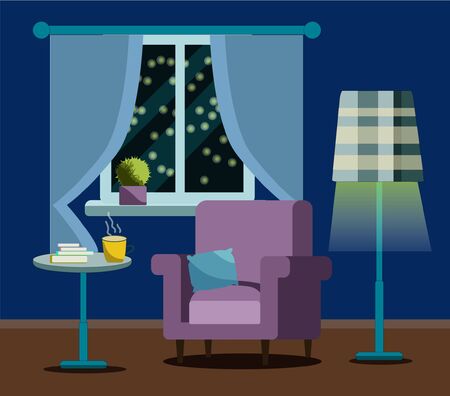The Essence of Colour in British Interiors
British interior design is renowned for its subtle sophistication, where colour serves as both a backdrop and a statement. The British approach to colour is deeply rooted in a rich tapestry of history and culture, reflecting everything from the moody landscapes of the Lake District to the vibrant façades of Georgian townhouses. Traditional palettes—think muted greens, deep blues, and gentle blushes—speak to a heritage of understated elegance, echoing centuries-old stately homes and country cottages. Yet, contemporary British interiors are far from static; they seamlessly blend these classic hues with fresh, modern accents, creating spaces that feel both timeless and current. This fusion is evident in the way designers pair bold feature walls or statement furniture with neutral foundations, striking a balance between calmness and energy. Ultimately, the essence of colour in British interiors lies in this thoughtful interplay between past and present, where every shade tells a story and contributes to an atmosphere that is at once soothing and uplifting.
2. Understanding Colour Theory: Foundations and Practical Application
At the heart of every beautifully designed British home lies a thoughtful approach to colour. Understanding the fundamentals of colour theory is essential for creating interiors that feel both calming and uplifting, reflecting the unique character of British living spaces. In this section, we delve into the basics—exploring how hue, saturation, and balance can transform a room from ordinary to extraordinary.
The Building Blocks: Hue, Saturation, and Balance
Colour theory begins with three key concepts:
| Concept | Definition | Practical Example in British Homes |
|---|---|---|
| Hue | The basic colour family, such as blue, green, or yellow. | Choosing a restful blue for a bedroom nods to classic British country style. |
| Saturation | The intensity or purity of a colour; higher saturation means more vividness. | Opting for muted sage greens in a sitting room creates a gentle, harmonious space. |
| Balance | The distribution of colours in a space to create visual harmony. | Pairing soft neutrals with accent tones—like ochre cushions on a cream sofa—echoes timeless British restraint with a modern twist. |
Applying Colour Theory in Everyday Design Decisions
British interiors often draw upon nature-inspired hues and subtle contrasts to evoke tranquillity and warmth. For example, layering different shades of green can mimic the lush countryside, while introducing pops of mustard or blush adds cheer without overwhelming the senses. The art lies in blending colours so that no single shade dominates—ensuring rooms feel both lively and restful.
Why Colour Matters in British Homes
Given the often-grey climate and changing natural light in the UK, selecting the right palette is crucial. Cool north-facing rooms may benefit from warm undertones like terracotta or honey, while south-facing spaces can handle bolder blues or verdant greens. By understanding these foundations of colour theory, homeowners can curate interiors that not only look stunning but also support wellbeing and comfort in daily life.

3. Calming Colour Palettes Inspired by the British Countryside
The British countryside, with its rolling hills, lush meadows, and dramatic coastlines, has long been a wellspring of inspiration for interior design. Drawing from these tranquil landscapes, many British homes incorporate gentle, nature-inspired palettes to foster a sense of peace and relaxation indoors. Soft sage greens reminiscent of Cotswold fields, powdery blues echoing the Cornish sky, and muted earth tones found in Lake District woodlands work harmoniously to evoke calmness.
Embracing Nature’s Subtle Hues
Incorporating colours such as chalky whites, stony greys, and delicate blush pinks helps bring the serenity of the outdoors inside. These hues reflect the understated elegance characteristic of British design sensibilities, lending spaces a timeless and restorative atmosphere. Layering these shades with natural textures—think linen drapes or wool throws—further enhances the soothing effect while maintaining an authentically British feel.
Coastal Influences for Light-Filled Calm
For homes near Britain’s iconic shores, designers often draw upon seafoam greens, sandy taupes, and weathered driftwood greys. Such palettes conjure images of windswept beaches and tranquil harbours, making them ideal for creating restful retreats within busy urban environments. When paired with ample natural light and tactile materials like rattan or jute, these colours invite relaxation and a subtle connection to the coast.
Creating Tranquillity Through Colour Theory
Ultimately, by selecting calming palettes rooted in local landscapes, British interior design demonstrates how colour theory can be used to cultivate tranquillity at home. Whether through soft botanical greens or gentle seaside blues, these thoughtfully chosen hues offer a soothing backdrop that nurtures wellbeing and elevates everyday living.
4. Uplifting Shades for Inviting British Living Spaces
In British interior design, where the weather often brings overcast skies and muted natural light, choosing the right palette for living spaces is essential in creating a welcoming and uplifting atmosphere. Utilising colour theory, designers frequently turn to hues that not only enhance mood but also maximise brightness within the home. Social areas such as lounges, kitchens, and dining rooms benefit from these invigorating shades, making them ideal for gatherings and daily family life.
Popular Uplifting Colours in Britain
British homes traditionally favour colours that counteract the grey tones outside. Warm whites, buttery yellows, sage greens, and soft blush pinks are regularly chosen to infuse energy without overwhelming a space. Brands like Farrow & Ball, Little Greene, and Dulux offer classic British paint ranges with nuanced undertones that adapt beautifully to varying daylight conditions.
Examples of Mood-Boosting Paints
| Paint Brand | Colour Name | Tone & Effect |
|---|---|---|
| Farrow & Ball | Dayroom Yellow | Lively yet gentle yellow; invigorates even north-facing rooms |
| Little Greene | Mischief | Vivid coral red; adds warmth and sociability |
| Dulux | Willow Tree | Soft green; promotes relaxation while staying fresh and vibrant |
Balancing Brightness with Character
The hallmark of British design is layering these uplifting shades with textured finishes—think matte emulsions on walls paired with gloss trims or chalky pastels offset by rich wood accents. This approach not only elevates the mood but ensures a timeless charm in social spaces. Incorporating mood-boosting colours through textiles, art, and accessories further enlivens interiors while allowing flexibility to update the look with the changing seasons.
5. Practical Tips for Integrating Colour into Your Home
Understanding the British Context
When considering colour within a British home, it’s essential to respect the unique character of traditional architecture. Whether you live in a Georgian terrace, Victorian semi, or Edwardian cottage, the historical features—such as cornicing, dado rails, and ornate fireplaces—provide an elegant canvas for creative colour expression.
Selecting Colours: Honouring Heritage with a Modern Twist
Begin by observing the natural light in your space; British homes often have smaller windows and varying light quality due to the climate. Choose muted tones inspired by nature—sage greens, dusty blues, and warm greys are all quintessentially British and help evoke a calming atmosphere. For uplifting moments, layer these with rich accent hues like ochre or deep teal.
Layering Colours with Period Features
Use period mouldings and panelling as an opportunity for gentle contrast. Painting mouldings in a slightly lighter or darker shade than the walls can enhance architectural detail without overwhelming the space. For example, pair soft white walls with pale grey skirting boards for understated elegance, or use a heritage green on panelling to ground a room while keeping the palette serene.
Blending Old and New
If your home has been updated with modern fixtures or extensions, bridge old and new through colour continuity. Consider using similar undertones throughout both historic and contemporary spaces to create flow. For instance, echo the warmth of exposed brick in older areas with terracotta accents in newer parts of the home.
Accent Walls and Accessories
For those wishing to experiment without commitment, introduce colour through accent walls or accessories. A deep navy wall behind a classic fireplace instantly draws attention while remaining sophisticated. Alternatively, layer in textiles—velvet cushions, wool throws, patterned rugs—in cheerful hues to lift spirits without detracting from period charm.
Final Touches: Personalising Your Palette
Ultimately, allow your own tastes and lifestyle to inform your choices. Display cherished art pieces or vintage ceramics that pick up on your chosen palette. The beauty of British interior design lies in its ability to embrace both tradition and individuality—curate your colours thoughtfully to create a calming yet uplifting haven tailored just for you.
6. Case Studies: Real-World British Homes Transformed by Colour
The practical application of colour theory within British interior design has led to some truly inspiring home transformations. By carefully curating palettes that reflect both the architecture and atmosphere of each space, designers have created interiors that are as functional as they are visually uplifting.
Victorian Terrace in London: Revitalising Tradition
In a classic Victorian terrace, heritage hues such as sage green and muted mustard were chosen to complement ornate mouldings and original fireplaces. These earthy tones not only honour the buildings history but also foster a restful, inviting ambience. Strategic pops of peacock blue in soft furnishings provide an invigorating contrast, enhancing the room’s vibrancy without overwhelming its character.
Cotswold Cottage: Nature-Inspired Tranquillity
A Cotswold cottage, surrounded by rolling countryside, was transformed using a palette inspired by the local landscape. Soft chalky whites on the walls create a luminous backdrop, while olive greens and gentle blush pinks appear in textiles and ceramics. This subtle blend brings the outside in, creating a seamless connection between the rural setting and interior, resulting in a calming sanctuary ideal for modern country living.
Modern Manchester Apartment: Urban Sophistication
For a city centre flat in Manchester, bold yet balanced colour choices define distinct zones within an open-plan layout. Deep navy feature walls ground the living area, fostering cosiness even amidst urban bustle. Accents of ochre yellow and muted teal add energy to communal spaces, while softer greys and whites maintain a sense of spaciousness. The outcome is a harmonious blend of practicality and contemporary British style.
Edinburgh Georgian Townhouse: Harmonising Old and New
This elegant Georgian townhouse used colour blocking techniques to highlight architectural details—cornices painted in pale duck egg blue offset against warm taupe walls create visual interest without disrupting period charm. Carefully selected jewel-toned accessories add sophistication and warmth, proving that even in historic homes, thoughtful use of colour can evoke both serenity and upliftment.
Key Takeaways
Each of these British interiors demonstrates how understanding and applying colour theory can transform a space—not just aesthetically, but emotionally too. Whether respecting tradition or embracing contemporary trends, mindful colour choices help shape environments that nurture wellbeing, express personality, and celebrate quintessentially British design sensibilities.

